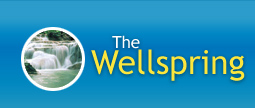13. The Gift of Massage
The skin is the largest organ of your body and accounts for almost one fifth of your total body weight. The skin is constantly growing and changing in sensitivity as it performs its many functions: protection, sensation, temperature regulation, excretion, respiration, and the metabolism and storage of fat.
Touch is the first sense to develop in a newborn. As an infant takes her first breath, she reaches out to learn what her new world is all about. Sensory receptors located in the skin start picking up enormous quantities of information and sending them to the brain. Pressure, temperature, pleasure, pain—each stimulus carries a message about the environment. Each one adds another tidbit to the infant’s store of experience.
For a baby to develop normally, it is essential that she be touched, physically handled. When touching is denied or severely restricted, an infant may actually die. Thousands of children in U.S. foundling homes (orphanages for the very young) died until, in the late 1920s, this connection between touch and life was understood and remedied. Adults who were deprived of physical stroking in childhood often adopt compulsive, destructive habits such as nail-biting, overeating, or smoking. There is some speculation that violent behavior may also be a result of touch deprivation in early childhood. Cross-cultural and laboratory research both reveal a strong association between early childcare practices and later violent behavior. The child who receives a great deal of attention, whose every need is promptly met, becomes a gentle, cooperative, nonaggressive adult. The child who receives intermittent attention often becomes a selfish, uncooperative, depressed, or aggressive adult.
Yet few adults appreciate how valuable touch can be. Many adults actually avoid bodily contact. If they weren’t touched with care and nurturance as children, they may view touching with suspicion and fear. Many people even fear their own bodies and are reluctant to touch or massage themselves. They are not comfortable with their own skin. Others were taught long ago that touching themselves was sinful, and that vestige of fear remains, especially in sexual expression. Because of the cultural connection between touch and sex, some people are loath to touch others except in formal handshakes, not wanting their actions to be misjudged. Those who are afraid to touch or be touched deprive themselves of a powerful source of nurturance and healing. In fact, when they are depressed or anxious, they may show an even greater tendency to withdraw from the very things that would help them feel better—a reassuring touch, a sympathetic hug, a healing massage.
There is a growing acceptance of therapeutic massage within the medical profession. In the 1970s, at the New York University Medical Center, Dolores Krieger, PhD, RN, conducted a study to determine the value of what she called “therapeutic touch.” One group of patients received regular care; another group received a simple form of touch from their nurses, similar to the laying on of hands, twice a day. Within one day, significant results were realized. The patients who were touched had increased blood hemoglobin levels (hemoglobin, which is found in the red blood cells, carries oxygen from the lungs to the other body tissues), which aided their recovery. The control group of patients showed no change in this aspect. In other test cases, Krieger verified the value of therapeutic touch in accelerating the healing process. Patients suffering stress-related diseases who experienced this form of touch consistently report feeling profound relaxation and an alleviation of pain and other symptoms, such as nausea, poor circulation, and tachycardia (excessively rapid heartbeat).
As a form of nurturance and rebalancing, and as an aid to healing, massage is hard to beat. Besides, it’s nonfattening, and if you do it yourself, it’s free. Some positive results of massage include:
- relief of pain and tension
- improved muscle tone
- a healthy complexion
- the release of emotional blocks caused by trauma and repression
- increased blood flow and electrical energy to “wake up” your tired body parts
- pleasure
- a general balancing of right and left, and upper and lower parts of your body
Begin with Self-Massage
Try a Head Massage
And a Foot Massage
Massage for Pain Relief

